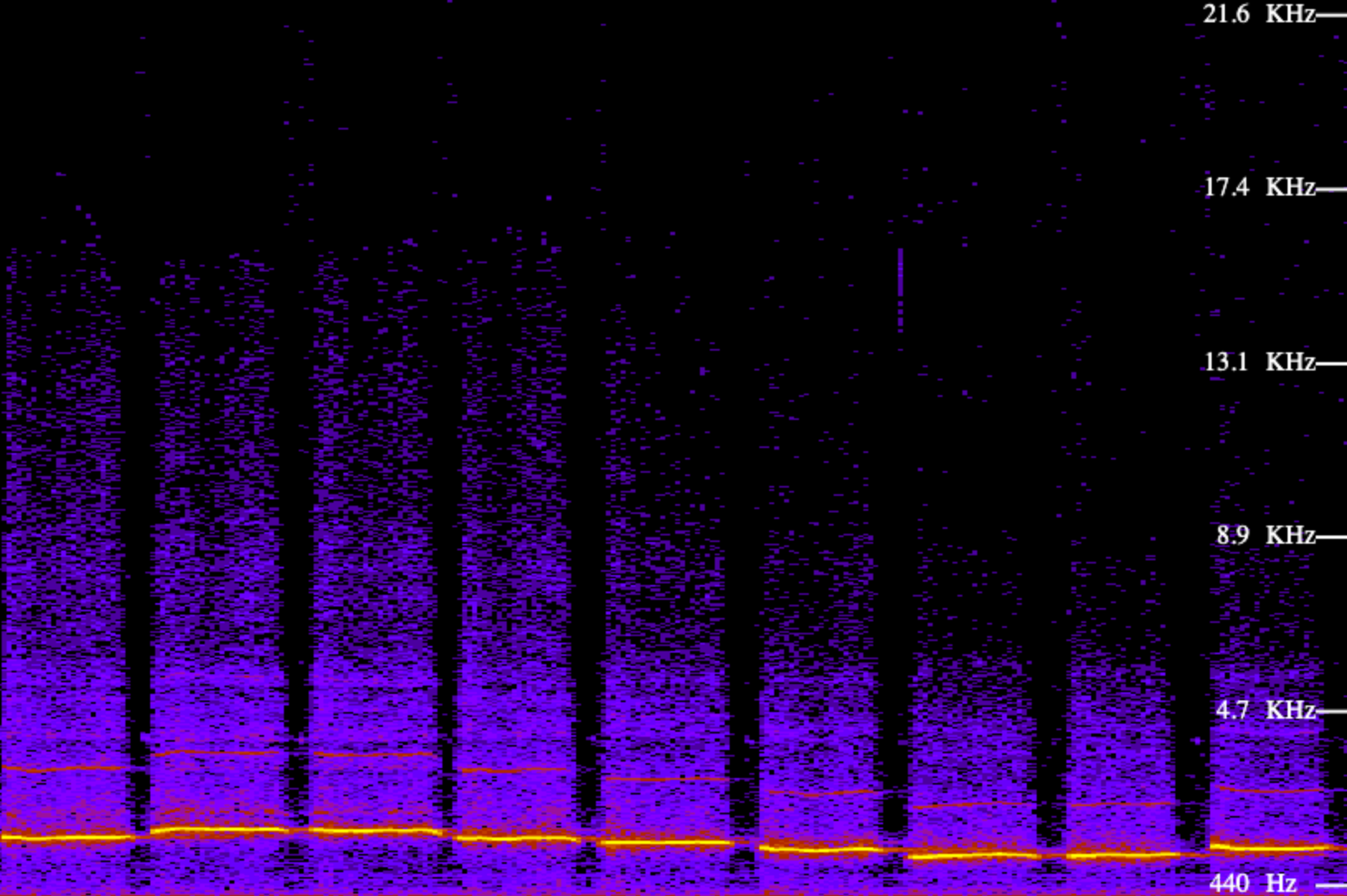Frequency in music refers to the speed of vibration of a sound wave, which determines its pitch. Understanding frequency is crucial for music producers, as it directly influences how we perceive and manipulate sounds.
What is Sound Frequency and How Does it Work?
Sound frequency is measured in Hertz (Hz) and signifies the number of times a sound wave vibrates per second. Higher frequency means more vibrations per second, resulting in a higher pitch. Imagine a guitar string: when plucked, it vibrates. Fast vibrations produce high-pitched sounds (high frequency), while slow vibrations result in low-pitched sounds (low frequency).

Why is Sound Frequency Important for Music Producers?
Clarity
The first key reason for understanding frequency is achieving clarity in your mix. Different instruments and vocals produce sounds at various frequencies. By recognizing and adjusting these frequencies, a producer can prevent overlapping of similar sounds, ensuring that each element is distinct and clear. This is particularly important in dense arrangements with multiple instruments and voices.
Balance
Balance is another essential aspect. A well-balanced mix has the right combination of low, mid, and high frequencies. An overemphasis on any of these can lead to a mix that sounds either too boomy and muddy (too much low-end) or too piercing and thin (too much high-end). Achieving this balance makes the track pleasant and engaging to listen to.
Emotion
Emotional impact is also tied to frequency. Different frequencies can evoke different feelings and atmospheres in a song. Lower frequencies tend to be perceived as warm and full, often used to create a sense of power or seriousness. In contrast, higher frequencies can add brightness, energy, and excitement. Understanding how to manipulate these emotional cues through frequency adjustments is vital for a producer.
Style
Lastly, frequency knowledge aids in genre-specific production. Different musical genres typically favor certain frequency ranges. For instance, electronic dance music often highlights lower frequencies for a more impactful bass, while classical music might focus on a broader spectrum to capture the nuances of various instruments.
What are the Sound Frequency Ranges?
There are seven main frequency ranges in music:
- Sub-Bass (20-60 Hz): Felt more than heard, found in synth basses and kick drums.
- Bass (60-250 Hz): Fundamental frequencies for rhythm section instruments like bass guitars and kick drums.
- Low Mids (250-500 Hz): Contains lower harmonics, common in guitars and lower strings.
- Midrange (500-2,000 Hz): Vocals and instruments like the piano sit here, crucial for clarity.
- Upper Mids (2,000-4,000 Hz): Important for vocal intelligibility and the attack of percussive instruments.
- Presence (4,000-6,000 Hz): Enhances presence and clarity, often adjusted for vocals and guitars.
- Brilliance (6,000-20,000 Hz): High-end sheen and sparkle, typically from cymbals and acoustic instruments.
This video visualizes the human audio frequency spectrum really nicely:
How does EQ relate to Frequency?
EQ, or Equalization, is a tool that allows producers to adjust the balance of different frequency ranges within a sound. It's a key component in mixing and mastering, shaping the tone and character of the music. For example, boosting bass frequencies can add warmth, while cutting midrange frequencies can reduce muddiness. EQ can emphasize certain instruments, adjust vocal clarity, or even create special effects.
Frequencies in your Studio
Aiming for a flat frequency response in your studio setup is crucial for accurate sound production and mixing.
A flat frequency response means your studio monitors or headphones reproduce audio without enhancing or suppressing any particular frequency range. In other words, the sound output is a true representation of the input signal without any coloration or bias towards bass, midrange, or treble frequencies. This neutrality is vital for producers because it allows you to hear the music exactly as it is, without any misleading emphasis or de-emphasis on certain sounds.
How to Achieve a Flat Frequency Response
- Select the right equipment. Invest in high-quality studio monitors and headphones known for their flat frequency response. Research and read reviews from trusted audio professionals to find equipment that offers the most neutral sound.
- Room acoustics. Your studio's physical space significantly affects how sound is perceived. Treat your room acoustically to minimize reflections, echoes, and bass buildup. This might include using bass traps, acoustic panels, and diffusers to control how sound behaves in your space.
- Monitor placement. Position your studio monitors correctly for optimal listening. They should form an equilateral triangle with your listening position, and the tweeters should be at ear level. Avoid placing monitors directly against walls or in corners, as this can exaggerate bass frequencies.
- Use a reference microphone for room calibration. Advanced setups might use a reference microphone and calibration software to analyze your room’s acoustic response. This technology can pinpoint specific frequency issues in your room and suggest corrections through physical room treatment or digital equalization. If you're a beginner producer, I wouldn't worry too much about this yet.
- Consistent listening levels. Listening at consistent, moderate volumes helps in perceiving frequencies accurately. High volumes can lead to a skewed perception of bass and treble frequencies due to the Fletcher-Munson curve, a phenomenon where the human ear perceives different frequencies differently at various loudness levels.
- Regularly test your mixes. Play your mixes on different sound systems and environments to see how they translate. This practice can help you understand the nuances of your studio’s frequency response and make more informed mixing decisions.
FAQs
What is Hz in simple terms?
Hz, or Hertz, is a unit of measurement for frequency. It represents the number of sound wave vibrations per second. Higher Hz means a higher-pitched sound.
Can we hear all frequency ranges?
Human hearing typically ranges from 20 Hz to 20,000 Hz. Sounds outside this range are inaudible to us.
Why do different instruments have different frequency ranges?
Each instrument has a unique construction and method of sound production, which determines its characteristic frequency range. For instance, a flute produces higher-frequency sounds than a cello due to its smaller size and higher pitch.
How do I know which frequencies to adjust when mixing?
It depends on the sound you're working with and the overall balance of the track. A good start is identifying any frequencies causing muddiness or harshness and adjusting them using EQ.
Is EQing necessary in all music production?
While not every track may require extensive EQing, it's a fundamental tool in shaping the sound of a recording, making it an essential skill for producers.
What happens if I mix with non-flat headphones or speakers?
Mixing with non-flat headphones or speakers can mislead you about how your mix actually sounds. You might overcompensate for perceived boosts or cuts in specific frequencies, leading to a mix that doesn't translate well on other playback systems.
Can I fix frequency issues with software?
Yes, software EQ can correct certain frequency issues, but it's best used as a supplement to good acoustics and equipment. Over-reliance on software might lead to an unnatural-sounding mix.
Is a flat frequency response important for all types of music?
While a flat frequency response is ideal for a wide range of music types, personal preference, and genre-specific characteristics can also play a role. However, starting with a flat response is generally recommended to ensure accurate sound reproduction.
How important is headphone quality for frequency response?
High-quality headphones can provide a more accurate frequency response, which is crucial for detailed mixing and mastering, especially when checking for subtleties in the sound. Using Airpods won't cut it for checking your mixes!








